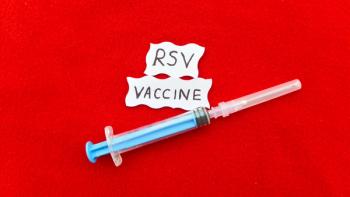
FDA Approves Ranibizumab Injection for Treatment of Diabetic Retinopathy
Key Takeaways
- Ranibizumab (Susvimo) is FDA-approved for diabetic retinopathy, offering continuous delivery via a refillable eye implant, reducing frequent injection needs.
- Diabetic retinopathy affects millions, causing vision impairment due to damaged blood vessels and fluid leakage into the retina.
Ranibizumab injection (Susvimo; Genentech) could offer long-lasting vision preservation and reduce the need for frequent injections in patients with diabetic retinopathy.
Ranibizumab injection 100 mg/mL (Susvimo; Genentech) has received FDA approval for the treatment of diabetic retinopathy (DR), marking the therapy as the first and only granted continuous delivery treatment indicated to maintain vision in individuals that experience DR, according to an announcement released by Genentech.1
Ranibizumab is a vascular endothelial growth factor (VEGF) inhibitor that is aimed at inhibiting a protein linked to the formation of new blood vessels and the leakiness of the vessels, known as VEGF-A. Susvimo offers a continuous supply of a specialized ranibizumab formulation through its Port Delivery Platform, unlike other approved treatments that often necessitate monthly eye injections. The Port Delivery Platform is a refillable eye implant, inserted once during an outpatient procedure, that delivers medication directly into the eye to treat specific retinal conditions that can lead to vision loss.1
“The approval of Susvimo for diabetic retinopathy expands treatment options for patients, offering predictable and immediate durability after implantation with only one treatment every 9 months,” Levi Garraway, MD, PhD, chief medical officer and head of global product development, said in a news release.1
Implications for Diabetic Retinopathy
DR impacts nearly 10 million individuals that reside in the United States and more than 100 million people globally, accounting for nearly 5% of all cases of visual impairment. The potentially blinding condition occurs when blood vessels and the formation of new blood vessels are damaged, causing blood and/or fluid to leak into the retina. Eventually, swelling and blockage of the blood supply to areas of the retina occur, which could gradually cause vision impairment.1
In its beginning stages, DR may not present symptoms, and vision issues could be mild; however, as the condition develops, individuals may experience spots or dark strings floating in the vision, blurred vision, fluctuating vision, dark or empty areas in the vision, and vision loss. Additionally, while the condition can occur in any individual with type 1 or type 2 diabetes, the longer an individual has diabetes and the less controlled their blood sugar is, the greater the chance of developing DR, according to Mayo Clinic.2
“Many patients with common retinal conditions seek alternative treatment options like Susvimo that can help preserve vision with longer intervals between treatments than regular eye injections,” Garraway said in a news release.1
Positive Phase 3 Study Results for Susvimo
The FDA’s approval for Susvimo was based on positive 1-year results from the multicenter, randomized, phase 3 Pavillion study (NCT04503551) that assessed the efficacy, safety, and pharmacokinetics of the Port Delivery Platform with ranibizumab. A total of 174 individuals with DR were included and randomly assigned 5:3 to receive Susvimo with refills every 9 months or monthly clinical observation.1
Individuals with DR who received 2 loading doses of intravitreal ranibizumab before Susvimo implantation demonstrated greater improvement on the Diabetic Retinopathy Severity Scale (DRSS), indicating a reduction in the severity of eye damage caused by diabetes. Additionally, no individuals receiving Susvimo required additional treatment within 1 year, and the safety profile of Susvimo remained consistent with previous findings.1
The study authors noted that the customized ranibizumab formulation delivered by Susvimo differs from the ranibizumab intravitreal injection (Lucentis; Genentech). While both contain the same active ingredient, the intravitreal injection is aimed to treat wet age-related macular degeneration (nAMD) and other retinal diseases, whereas Susvimo is delivered continuously through a surgically implanted, refillable eye implant.1
“Susvimo is a compelling new treatment for patients at risk of vision loss from progression of diabetic retinopathy,” Carl Awh, MD, vitreoretinal surgeon at Tennessee Retina, concluded in a news release. “I am delighted to have this far more durable treatment available for my patients.”
REFERENCES
1. FDA approves Roche’s Susvimo for diabetic retinopathy. Roche. News release. May 21, 2025. Accessed May 22, 2025. https://www.roche.com/media/releases/med-cor-2025-05-22
2. Diabetic Retinopathy. Mayo Clinic. News release. February 21, 2023. Accessed May 22, 2025. https://www.mayoclinic.org/diseases-conditions/diabetic-retinopathy/symptoms-causes/syc-20371611
Newsletter
Stay informed on drug updates, treatment guidelines, and pharmacy practice trends—subscribe to Pharmacy Times for weekly clinical insights.




















































































































































































































